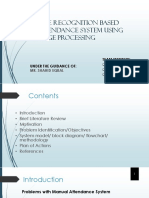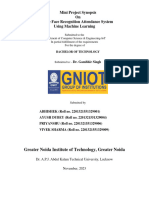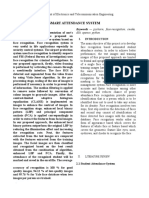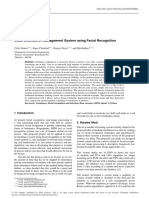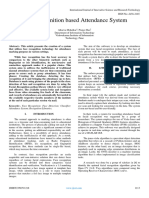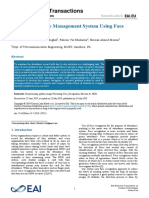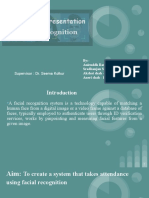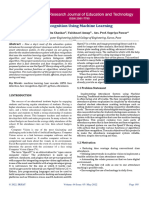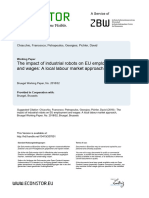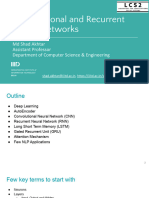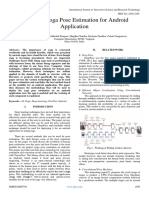0% found this document useful (0 votes)
21 views1 page30x40 Template
This document describes a face recognition attendance system using Python. The objective is to accurately track attendance by using facial recognition to identify individuals. The methodology includes collecting facial images, preprocessing them, extracting features using techniques like PCA or LBP, training a model like SVM or CNN on the features, using the model to recognize faces in real-time and mark attendance automatically. Some advantages are high accuracy, efficiency by automating tracking, added security, and flexibility through customizing the Python-based system. Future work could improve accuracy, address privacy concerns, and enhance the user experience.
Uploaded by
DeepCopyright
© © All Rights Reserved
We take content rights seriously. If you suspect this is your content, claim it here.
Available Formats
Download as PPTX, PDF, TXT or read online on Scribd
0% found this document useful (0 votes)
21 views1 page30x40 Template
This document describes a face recognition attendance system using Python. The objective is to accurately track attendance by using facial recognition to identify individuals. The methodology includes collecting facial images, preprocessing them, extracting features using techniques like PCA or LBP, training a model like SVM or CNN on the features, using the model to recognize faces in real-time and mark attendance automatically. Some advantages are high accuracy, efficiency by automating tracking, added security, and flexibility through customizing the Python-based system. Future work could improve accuracy, address privacy concerns, and enhance the user experience.
Uploaded by
DeepCopyright
© © All Rights Reserved
We take content rights seriously. If you suspect this is your content, claim it here.
Available Formats
Download as PPTX, PDF, TXT or read online on Scribd
/ 1




